
 |
Satish Lele satish.lele@gmail.com |
Introduction: Sarpagandha is also called as Indian snakeroot. Although Sarpagandha is best known for treating high blood pressure, Sarpagandha is used in Indian medicine as remedy for mental disorders too. The role of component, reserpine, in reducing blood pressure is as follows. Dopamine, epinephrine (adrenaline), and noradrenaline are a group of hormones (neurotransmitters), known collectively as catecholamines. These are produced in the adrenal glands and are released into the blood stream in response to physical or emotional stress. Noradrenaline constricts the blood vessels increasing the blood pressure and adrenaline increases the heart rate and metabolism.
Botanical Name: Rauwolfia serpentina Benth ex. Kutz.
Family – Apocyanaceae (Kutaja Kula)
English Name - Sepentina root, Black snakeroot
Hindi name – chota chand, Dhaval barua
Bihari name – Dhanmarua, Chandmarua, Isargaj
Telugu name - Patala Garuda, Patalagani
Bengali Name - Chandar
Marathi Name - Adkayi
Gujarati Name - amelpodi
Malayalam Name - Chivan Amalpodi, Chivan Avalpori
Tamil name – Chivan Amalpodi
Sanskrit Synonyms - Chandramara (Chandramaahlaadam maarayati) Chandra refers to mind. The herb that helps to relieve the tensions of mind.
Dhavalavitapa – (Dhaavati shodhayati mano dehamcha) The herb that cleanses and purifies mind and body
Naakuli, Sarpasugandha, Sugandha, Mukta, Nakuleshta
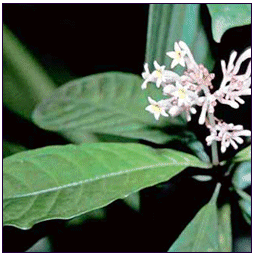
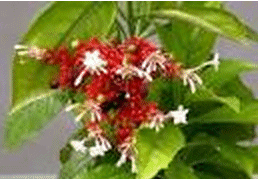
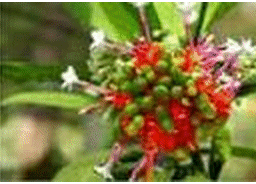
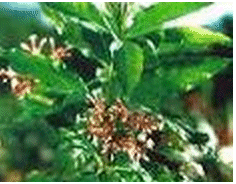
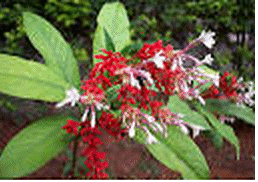
Applications / Uses: Reserpine significantly lowers catecholamines in adrenergic nerves and in heart. This slows down the heart rate and helps open up capillaries and arterioles. Sarpagandha in turn cause a reduction in blood pressure.
The powdered root of Rauwolfia serpentina contains more than 0.15% of alkaloids calculated as reserpine. R. serpentina is effective for mild to moderate hypertension.
The Demand: Domestic demand was 340.10 tons in 1999-2000. Sarpagandha was 588.70 tons (Rs. 883.10 lakhs) in 2004-05. Demand supply gap is about 250 tons per year.
Cultivation Process: Sarpagandha / Rauvolfia root / Serpentine root is one of the important crude drugs used in modern medicine. Its leaves are simple, 75 to 100 mm long and 35 to 50 mm broad. Root is prominent, tuberous, usually branched, 5 to 26 mm in diameter. Sarpagandha root penetrates upto 400 to 600 mm deep into soil.
Habitat: Sarpagandha is a woody herb and grows to a height of 600 to 900 mm. Sarpagandha grows wildly in North Eastern region of India, with an altitude upto of 500 meters.
Soil and Climate: The plant grows in a wide variety of soils, from sandy alluvial loam to red lateritic loam with large percentage of humus. Soil should be acidic in nature. The ideal pH for this crop is from 4.6 – 6.5. Sarpagandha prefers hot humid climate, humus rich sandy loam soil. A climate with a temperature range of 10 to 30 deg C, seems to be well suited for this plant. The best areas, which combine high rainfall with properly drained soil, as in North Eastern region of India.
Propagation: Rauvolfia can be propagated by seed and also by vegetative means like root cutting, root stumps, and stem cutting. Seed propagation is best method for commercial plantation. A healthy mother stock should be raised before hand for collection of seeds.
Seed propagation: Seed germination is highly variable. Germination of heavy seeds is about 20 to 40%, during April to June. Seeds are soaked in water for 24 hours. For freshly collected heavy seeds, germination rate is highest (upto 60%). Months of April and May are found to be suitable for sowing seeds in nursery. The nursery is prepared by raised beds mixing with one-third of well matured organic manure and leaf mould. Soil should have two third amount of medium silt loam soil, and should be under partial shade.
Seeds are sown 20 to 30 mm apart in rows in shallow furrows in April. The furrows are then covered with a fine mixture of soil and organic manure. The bed should be kept moist by light watering. Germination starts after 15 to 20 days and continues upto 40 to 50 days. The nursery should be kept moist throughout the germination period. Seedlings are ready by mid June or July for transplantation. Seedlings may be raised in poly bags also. About 6 kg seed sown during April and May in a 500 square meter bed will be sufficient for one hectare area of plantation.By stem cutting: As collection of seeds is both laborious and costly, vegetative propagation by root or shoot cuttings has been advocated for raising plantation to collect the seeds, as well as to quickly multiply the genetically superior clones. Hard wooded stem cutting measuring 150 to 200 mm are closely planted during June in the nursery beds where continuous moisture is maintained.
After sprouting and formation of roots, these plants are transplanted in the main field at given spacing. Nearly 75-95% success is obtained if treated with rooting hormone ß-indole acetic acid @30 ppm for 12 hours. Treated cuttings root within 15 days.By root cutting: Large tap roots with a few filiform lateral secondary rootlets are used. They are cut at 25 to 50 mm in length and planted on moist sand bed. Root cuttings of about 2.5 mm diameter planted in March to June, give success rate of about 80% or more, in about 1 to 1 and half months time. About 100 kgs of root cuttings are required to plant 1 hectare.
By root-stump: This is prepared by cutting about 50 mm root with a portion of the stem above the collar. This has a success rate of about 90-95%. Such plants are transplanted between May and July. Only one plant can be raised from a single stump.
Plantation: The seedlings are grown in nursery for 40 to 50 days. These have 4 to 6 leaves and are 100 to 120 mm tall. Naked root seedlings or those seedlings grown in poly bags are planted at spacing of 300 by 300 mm. This is optimum distance. Seedlings are carefully dug out and the tap root is cut. They are then dipped in a 0.1% solution of fungicide before planting. This protects them against soil borne fungus causing damping off disease. Sarpagandha takes a long duration (18 months onwards) as Sarpagandha is slow growing crop, particularly in the initial stage. About 80,000 to 1,00,000 seedlings are required per hectare as a sole crop.
Irrigation And Intercropping: Rouvolfia is cultivated as a rainfed crop. However, if irrigation is available 4 times in summer and 2 times in winter at an interval of one month, irrigation may be applied for higher yield. Sarpagandha is possible to grow inter crop in Rauvolfia plantation, like patchouli in the first year particularly where good irrigation facilities are available. Since Rouvolfia is shade loving Rouvolfia can be planted as intercrop in orchards or some other plantation crops.
Plant Protection: Root knots appear as galls caused by nematode resulting in stunted growth. Etiolation and decrease in size of the leaf are the symptoms in the aerial portion. Application of Carbofuran or Phorate granules will control them. Tagetes may be intercropped as trap crop against nematode. A pyralid caterpillar (Glyphodes vertumnalis) cause appreciable damage to the leaves. Some other caterpillars roll the leaf and feed on the green matter of tender leaves causing defoliation. They can be controlled by spraying 0.2% Rogor. Cockchafer grubs (Anomala polita) attack the seedlings about 20 mm below the hypocotyls, resulting in their drying up. To control the attack of grubs, mix phorate granules with the soil at the time of nursery preparation.
Harvesting and Yield: The marketable roots are generally collected 2 to 3 years after plantation, preferably after 30 months of planting. When transplanting is done during June or July, harvesting period coincides with shedding of leaves during early autumn. At this stage root contains maximum concentration of total alkaloids. During harvest the roots may be found to go up to 400 mm deep in the soil. During root harvesting the thin roots are also collected. Care should be taken to keep the root bark intact as the bark constitutes 40 to 56% of the whole root and has a higher alkaloid content. In general during winter months plants remain dormant. Winter is considered ideal time for harvesting.
Yield: Though Rauvolfia can be propagated by various methods, maximum yield of root is obtained when the propagation is done by seeds that varies from 100 gram to 400 gram per plant. The average yield of Rauvolfia dry root is approximately 2,000 to 2,500 kg per hectare under average management when harvested after 30 months.
Application of a light irrigation, if possible will make digging easier. After digging, the roots are cleaned, washed and cut into 120 to 150 mm pieces, for drying and storage. The dry root possesses upto 10-12% moisture. The dried roots are stored in polythene lined gunny bags in cool dry place to protect them from mould.
For collection of seeds, plants in small portion of plantation are allowed to flower and bear fruits. The fruits start maturing from middle of July and continue till February. Mature seeds bear a purplish black fleshy covering. Since all the seeds do not mature at a time, these are picked periodically, otherwise ripe seeds drop off. After the collection, fleshy covering should be removed by washing the seeds in water. After washing, the seeds are dried in shade and are stored in airtight containers.
Yield: 2,000 Kg. Dry roots after 30 months
Gross return: @Rs. 80 per Kg. (2000 x 80) is Rs. 1,60,000
Total cost of production Rs. 50,000
Net return from 30 months cycle crop harvesting: Rs. 1,10,000.


